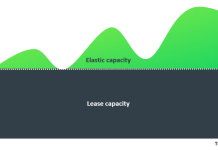As AI deals continue to devour the majority of venture-backed funding, terms like “GenAI” and “agentic AI” have become inescapable in the workplace, especially the buzz within sales and revenue departments at B2B enterprises. AI’s future is undoubtedly bright, but go-to-market teams don’t need to wait – now is the time to explore how AI is transforming sales and understand where it is headed so you and your team can leverage it to its fullest potential. Here’s what to know:
Current Applications of AI in Sales
As things stand, AI is transforming sales by automating key processes, enhancing efficiency and driving better outcomes. Organizations can leverage AI to streamline sales training, enablement and outreach, helping teams upskill faster and personalize communication at scale. AI also plays a critical role in identifying ideal customer profiles, improving forecasting accuracy, and managing pipelines more effectively.
Additionally, teams are reducing administrative burdens by automating routine tasks like CRM updates and call analysis. Sales teams can leverage AI to create customized documents and automate RFP responses, accelerating deal cycles. These applications collectively enhance productivity, improve targeting, and drive higher sales performance.
As more LLMs and GenAI models enter the market and token costs continue to drop, innovative solutions tailored to niche sales use cases are rapidly emerging. This steady influx of AI-powered tools is helping revenue leaders address an increasing number of go-to-market challenges each month.
Why Revenue Leaders Must Fully Leverage AI Now
As is often the case with emerging technology, many companies are implementing AI on a case-by-case basis. For example, they might use an AI tool to help them track employees’ business expenses. Then, they may add an AI system to streamline customer support, using chatbots to handle routine inquiries and save human agents’ time.
However, taking a gradual approach to AI may limit its potential impact – and most teams can’t afford to fall behind. Adopting AI in a piecemeal way often means sales departments miss out on opportunities to optimize multiple interconnected processes at once. Since AI helps teams achieve more in less time, what took hours can now be done in seconds, so there is also a significant opportunity cost to delaying full adoption.
The Future Impact of AI on Sales and Revenue Enablement
Imagine a sales call where an AI agent sits in on your call in real-time, pulls up relevant case studies, surfaces competitive differentiators, and even drafts follow-up emails before the call ends. Fortunately, this isn’t hypothetical. AI-powered copilots and avatars that go beyond transcription to deliver real-time enablement are already being beta-tested and deployed today – and that’s a big opportunity for your organization.
With startups and enterprises alike developing more advanced AI agents and more forward-thinking companies replacing interactive voice responses with AI, there’s no question that mainstream adoption of live AI assistance is well on its way.
How Organizations Can Embrace AI’s Possibilities Today
Before diving headfirst into new tools, organizations should begin by conducting a focused audit of their current sales workflows. Look closely at where your team is spending the most time, especially on repetitive, manual tasks like call logging, email drafting, CRM updates or RFP responses. Identify areas where bottlenecks exist or where accuracy and speed are critical, and ask: What challenges are we repeatedly facing? Where could AI create the most impact? Once opportunities are mapped, choose one or two AI tools to pilot in those specific areas. Assign an “AI champion” within your team to lead implementation, track outcomes and gather feedback. Successful pilots can then be scaled across functions to maximize ROI and drive adoption at a sustainable pace. The goal is to move from experimentation to operational integration – thoughtfully, but quickly.
Businesses that embrace AI-driven tools will gain a competitive edge by streamlining workflows, boosting productivity, and delivering exceptional buyer experiences.
Looking at the pace with which the landscape is being reimagined, it’s clear the integration of these technologies into everyday sales processes is no longer optional – it’s essential for staying ahead in an increasingly competitive market.
Falling behind isn’t an option. To stay on the cutting edge, teams must take an active role in experimenting with new AI capabilities, adopting what works, and making continuous innovation a part of their culture. The companies that treat AI as a strategic priority, not a one-off experiment, will be the ones that lead the future of sales.





